Vintage Masters has been released on Magic Online, and with it a watershed moment for Magic and MTGO has finally transpired: The Power Nine is available on Magic Online. The long-awaited release of these powerful and iconic cards finally makes possible something that many people have dreamed of for years, which is online Vintage Magic anytime, anyplace, anywhere…
There is no doubt in my mind that online Vintage play is going to change the format in a variety of ways. First of all, more tournaments means heightened awareness, popularity, and play for a format that has always struggled to cobble together enough players with the cards, commitment, and drive to explore the format. The fact that players scattered all about the world looking to get in some games can now log on and link up against other like-minded Vintage fans is a really big deal. Eliminating the “it’s really hard to get 25 players in the same place at the same time to play Vintage” element from the equation by having daily events will go a long way to improving the visibility and playability of what had been, in recent years, a niche format.
Vintage is a ton of fun. The games are fast-paced, exciting, full of critical decisions, and fun to play. There is no doubt in my mind that its popularity will grow and grow as players are able to pick it up and start playing the format online. In today’s article I will break down the key decks that matter in paper Vintage (what they look like, what they do, and why to play them) so that newer players can get a general idea what to expect once people start acquiring Power and the online Vintage metagame starts to take shape.
Before I get started looking at a bunch of deck lists and discussing them, I’d like to first make a few statements about what Vintage IS:
First and foremost, Vintage is a format that is defined by cards that are individually absurdly powerful.
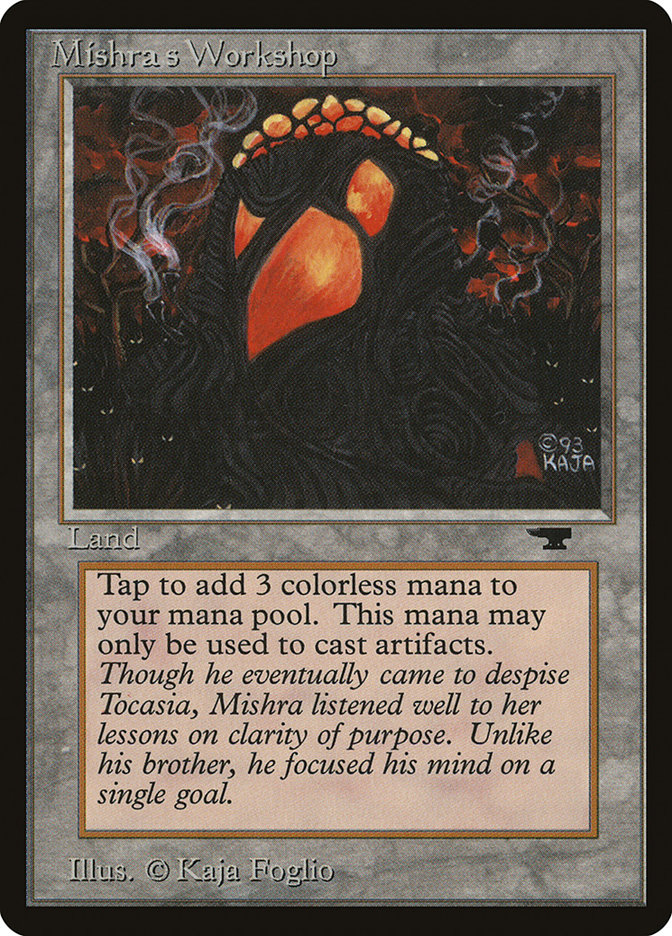
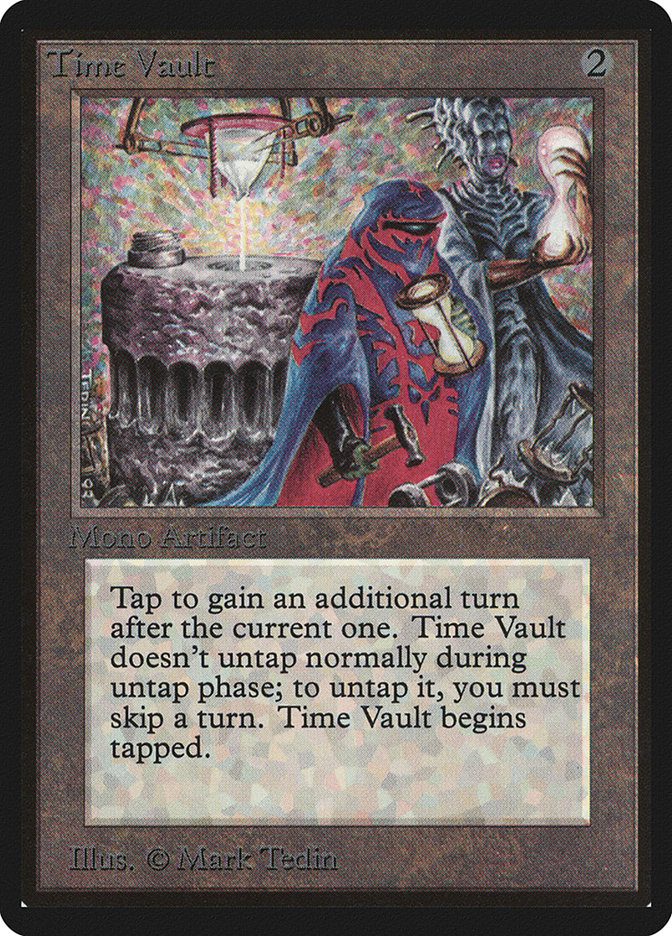

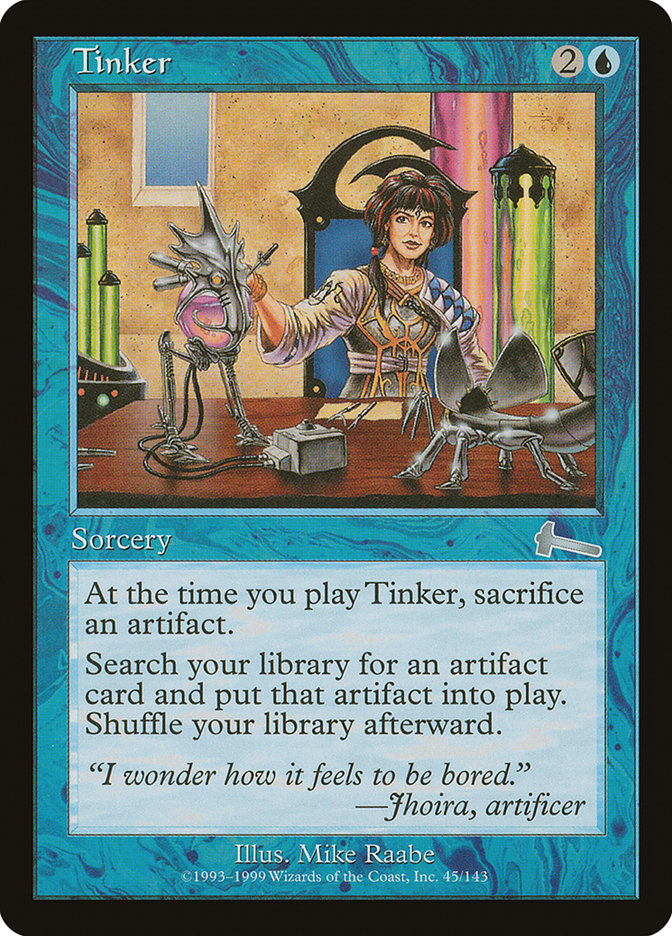
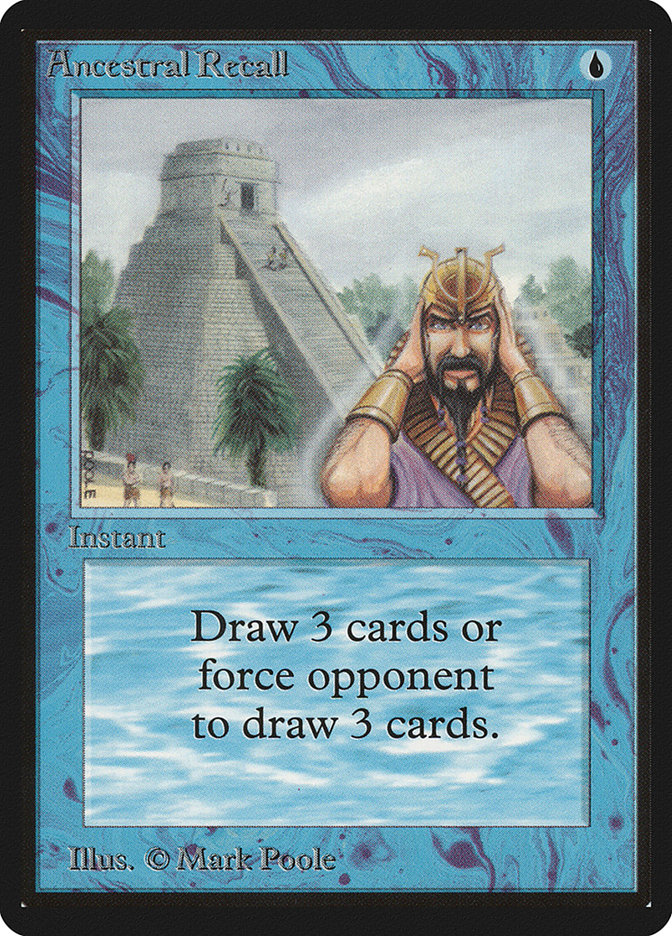
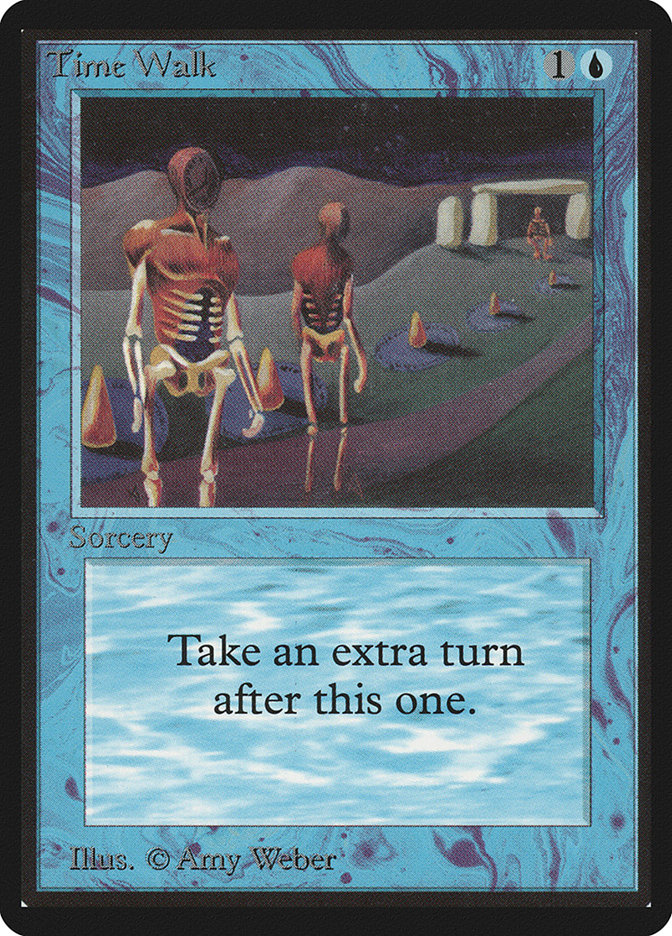
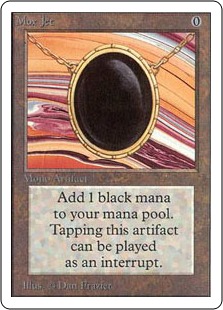
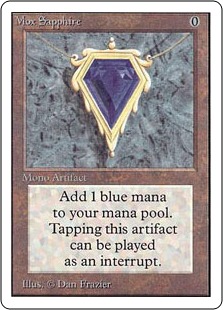
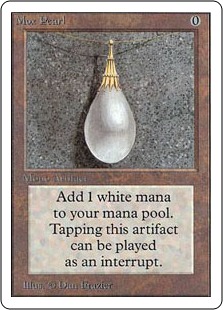
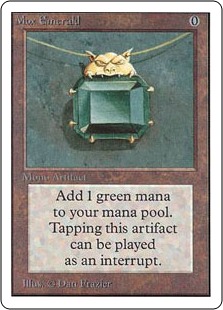
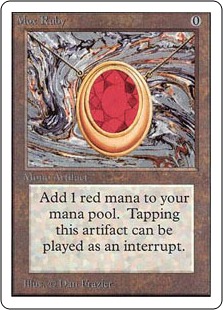
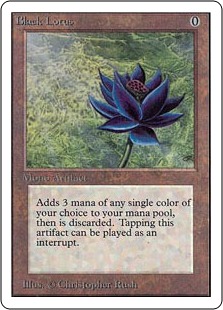
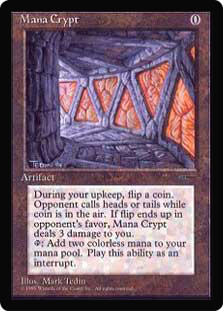
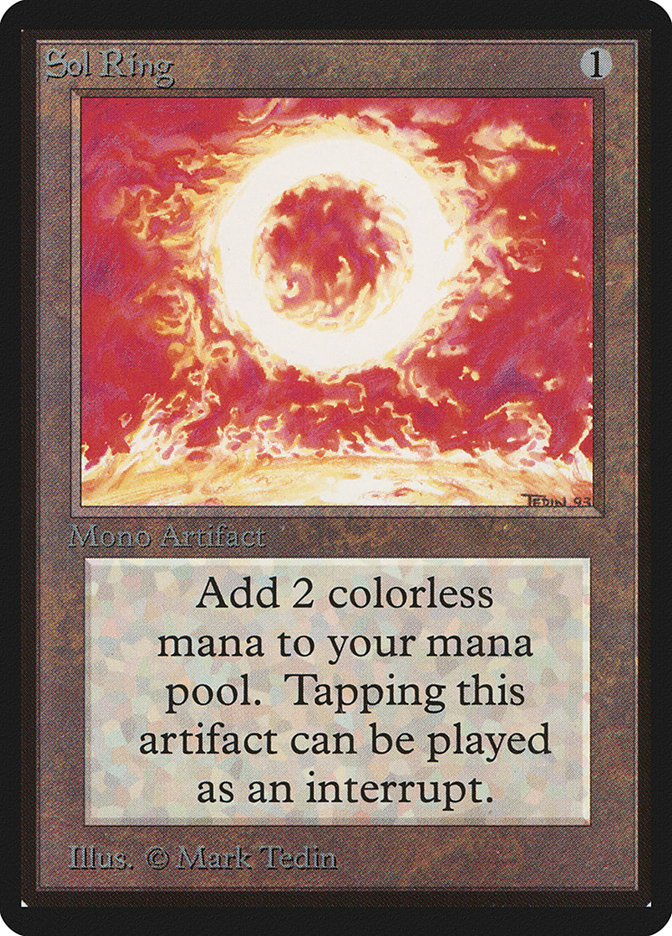
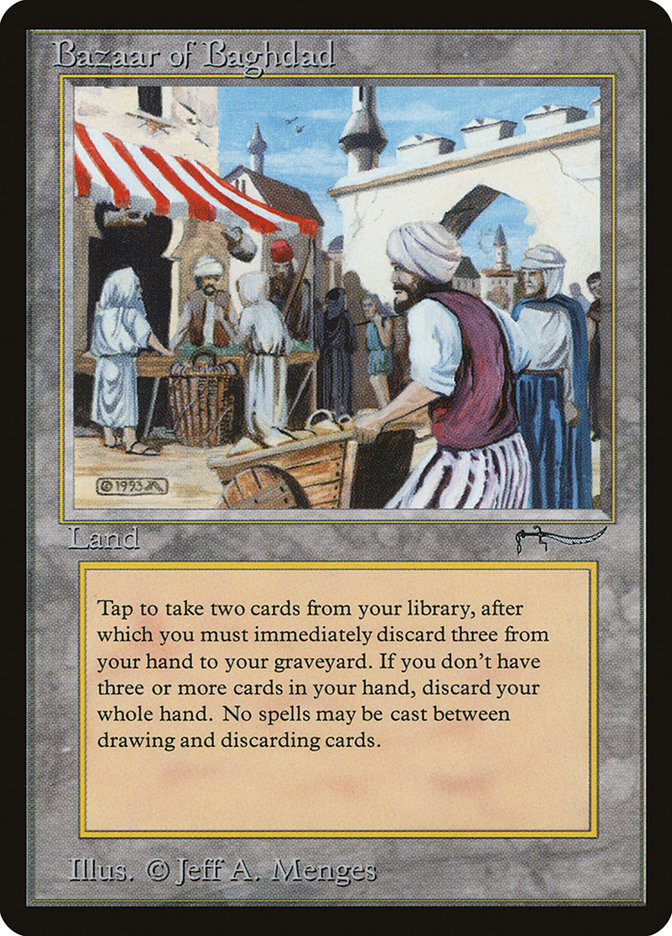
The exceptions to the rule.
Many of the cards that are allowed, albeit restricted, in Vintage are cards that by modern standards are laughable to even exist. They are so powerful and so undercosted that most of them would be straight-up laughed off the page of any fanboy “design your own card” site.
With that being said, since everybody’s deck includes these types of cards and has access to these kinds of bananas tactics, it all sort of evens out. It is the same old adage of Legacy decks crush Modern decks which crush Standard decks which crush draft decks. A Vintage deck is its own unique animal and can only be judged against other Vintage decks.
The important take away from this fact is that ALL Vintage decks do something intrinsically powerful and must be equipped to also deal with other decks that are doing incredibly powerful things at all times.
One might assume that just because there are so many powerful cards in the format that most games are decided on the first turn. While it is certainly true that games can be decided on the first turn, most decks have some sort of recourse to deal with fast or broken draws from the opposition. The format has lots of free or cheap permission and other cards that can have a huge impact on the game very quickly. In this regard, while decks are capable of doing something very broken very quickly, it is also safe to say that all decks have just-as-effective ways to stop opponents from doing those broken things.
In fact, I would say as a general rule it is easier to stop somebody from doing broken stuff quickly than it is to actually win quickly, which is an oversight that people who regurgitate the worn out adage of “Vintage is just a turn-one format” rarely seem to grasp.
One of the things that makes Vintage so different from other formats is that the access to fast mana (Moxes) and tutor effects makes games play out very differently from other formats. It is much easier to always have access to whatever you want whenever you need it. It makes in-game decisions such as which cards you search for and when you play your spells incredibly important.
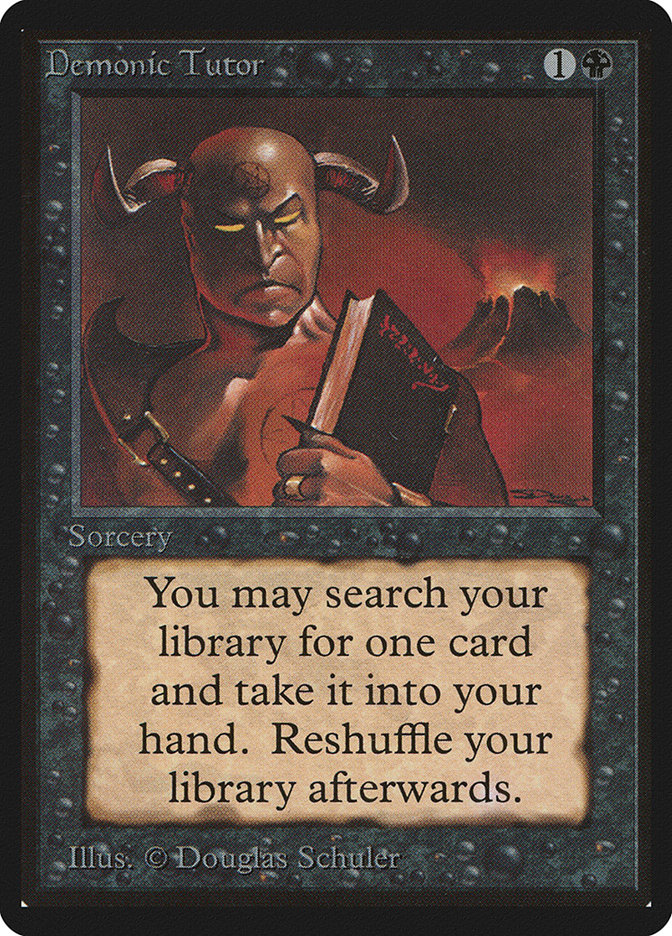
They be like smoove, (what?) Can you teach me how to DT?
Playing a land, Mox, and Demonic Tutor against an unknown deck on the first turn is a pretty different experience from most others in tournament Magic. What do you get? How does the value of the card you get change depending upon what your opponent might be playing? What might they have to answer different spells you might search up and try to execute?
It is some pretty exciting gameplay, and it puts a lot of emphasis on a player’s actual decisions.
Vintage is full of broken cards, even more efficient ways to deal with broken cards, and endless possible lines of play. Is it any wonder that people who start playing Vintage usually get hooked on the format for life?
Dredge
The first deck that I would expect to make its presence known on the online metagame is Dredge. Ever since the release of Future Sight, when the deck literally got all of the tools it needed to be a powerhouse, Dredge has existed as a mainstay pillar of Vintage.

This isn’t your Legacy friend’s Dredge deck.
Bazaar of Baghdad is for the Dredge deck basically a one-card win-the-game combo.
Creatures (25)
Lands (16)
Spells (19)
Sideboard

Bazaar of Baghdad provides the discard outlet along with two extra free dredges per turn, which is all a Dredge deck could basically ever ask for. A turn-one Bazaar of Baghdad will basically equate to a game win if a player activates it twice and the opponent can’t find some way to interact with the slew of graveyard-bound resources it provides.
Dredge doesn’t require the highly-sought-after and difficult-to-acquire Power Nine cards, which makes it much easier to build (especially in the new online format), so I would anticipate the deck seeing a lot of play right from the start. I could certainly see the emergent metagame online playing a lot of graveyard hate to compensate for how good the deck is coupled with the fact that a lot of players won’t have Power Nine to build other decks immediately. If I were to play online (especially in the early goings of Vintage tournaments) I would almost certainly overcompensate with cards to combat this narrow but deadly strategy.
I also believe that Dredge is one of the overall most powerful decks in Vintage, even when assuming a powered metagame. It has a ton of raw power and can execute its gameplan very effectively while also ignoring the vast majority of the things an opponent might play to stop other fast combo decks. The Achilles heel of this deck is that it is a known powerful commodity and that people do typically play cards that are very effective at defeating the deck.
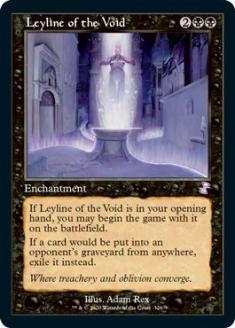

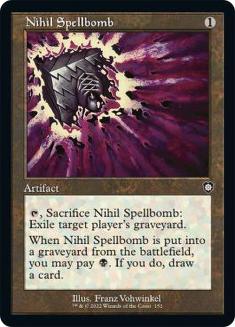
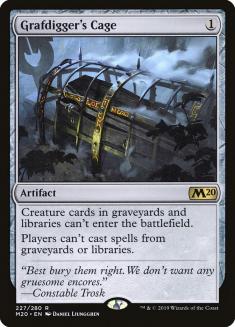
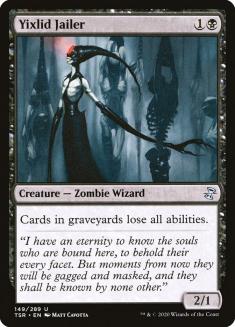
Dredge doesn’t lose to decks, it loses to cards.
Dredge is one of those decks that basically has a favorable matchup against the majority of the format – unless the opponent draws a powerful hate card and the Dredge deck can’t answer it. Playing with and against Dredge in Vintage is very comparable to playing a deck like Affinity in Modern—if the opponent doesn’t draw his or her Stony Silence on the second turn, or doesn’t topdeck a Supreme Verdict, the Affinity player is probably going to win most of its games… but if the opponent does find these critical cards at the right time and they go unanswered, those individual cards can win the game all by themselves.
Dredge is a percentages game. Whenever players are not playing enough sideboard hate, Dredge becomes a freeroll game. I would anticipate that while many players are still trying to accumulate the Power Nine to complete decks, Dredge will demand that opponents have those sideboard cards, at least for now.
I guess not everybody has gotten the memo that Dredge is good on Magic Online… Consider yourself warned…
Creatures (21)
- 1 Flame-Kin Zealot
- 4 Golgari Grave-Troll
- 2 Golgari Thug
- 4 Stinkweed Imp
- 4 Narcomoeba
- 2 Fatestitcher
- 4 Bloodghast
Lands (14)
Spells (25)
- 4 Cabal Therapy
- 4 Serum Powder
- 2 Darkblast
- 3 Dread Return
- 4 Bridge from Below
- 4 Nature's Claim
- 4 Mental Misstep
Sideboard

Fish Decks
Disruptive blue creature decks have long been a part of the Vintage metagame. The key difference between now and then is that the printing of very good creature cards in recent years has actually made various different styles of Fish decks a real contender in Vintage.
For players who may be considering transitioning from Legacy or other formats into Vintage online, I would strongly recommend taking a look at some of these aggro and tempo decks that have managed considerable success in Vintage. Vintage Fish decks are basically Legacy Fish that get to upgrade to play much better spells like Moxes, Black Lotus, Ancestral Recall, and Time Walk.
The gameplan is basically the same as in any other format: play efficient creatures, protect yourself with good permission, draw cards, and ride these advantages to victory.
Creatures (12)
Lands (11)
Spells (37)
- 1 Brainstorm
- 3 Lightning Bolt
- 1 Mystical Tutor
- 4 Force of Will
- 1 Mountain
- 3 Island
- 1 Time Walk
- 1 Ancestral Recall
- 4 Gush
- 1 Misdirection
- 1 Black Lotus
- 1 Mox Ruby
- 1 Mox Sapphire
- 1 Ponder
- 2 Spell Pierce
- 4 Preordain
- 1 Steel Sabotage
- 4 Mental Misstep
- 1 Flusterstorm
- 1 Fire
Sideboard

U/R Delver is basically doing the exact same thing in Vintage as RUG Delver tries to accomplish in Legacy: be the best tempo deck possible. Another thing that Vintage creature decks also tend to benefit from is that there is a disproportionately low amount of creature removal compared to basically every other Constructed format.
In a format where all of the most ridiculous spells have always been (and always will be) non-creature cards, players need to expend a lot of resources to fighting against things that are not creatures. For instance, it is possible to play around and win against a resolved Delver of Secrets – but not so much against a Time Vault + Voltaic Key or Tinker for Blightsteel Colossus.
So while creatures may be on the tamer end of the broken scale with regard to the Vintage card pool, that very fact can sometimes work to its advantage because it draws a less hate than many other strategies.
Creatures (15)
Lands (18)
Spells (27)
- 1 Brainstorm
- 1 Vampiric Tutor
- 4 Force of Will
- 1 Diabolic Edict
- 1 Demonic Tutor
- 1 Time Walk
- 1 Ancestral Recall
- 1 Null Rod
- 2 Mana Leak
- 1 Black Lotus
- 1 Mox Emerald
- 1 Mox Jet
- 1 Mox Sapphire
- 1 Steel Sabotage
- 3 Mental Misstep
- 2 Flusterstorm
- 4 Abrupt Decay
Sideboard

The wild success of BUG Fish earlier on this spring may have tapered off in the last month, but I would never really count this deck down and out. It has a lot of useful tools to strangle opponents out of the game simply by playing a Jund-style game of attrition, whittling away all of an opponent’s resources. BUG is less of a tempo deck and more of a Vintage midrange-style deck that has great answers, great disruption, and hearty, versatile threats.
I also like this deck because I think it is the deck that can really take advantage of Abrupt Decay better than other decks can. A deck like Aggro BUG is looking for a flexible answer card that is able to deal with a wide array of different kinds of cards against virtually every single deck in the format, and this is the ideal answer to the most difficult problems out there.
I am definitely happy that at this time creature decks have really been able to thrive and carve out a spot for themselves in Vintage. There was a long, long time where trying to attack with creatures (not named Psychatog or Tinkered onto the battlefield) was generally a death wish. The fact that creatures are so good in the here-and-now is an aspect that I think makes Vintage more enjoyable particularly to newer players.
Mishra’s Workshop
Simply put, Mishra’s Workshop is and has been a super powerful Magic card that defines Vintage.

Colored mana is for suckers.
Black Lotus every turn? Out-produce my opponent basically three-to-one over a course of a game? Play games where an opponent literally cannot cast a single spell?
It’s all part of a day in the life of a Workshop Mage.
Creatures (18)
- 1 Sundering Titan
- 1 Duplicant
- 4 Lodestone Golem
- 1 Wurmcoil Engine
- 1 Steel Hellkite
- 4 Kuldotha Forgemaster
- 4 Phyrexian Revoker
- 2 Phyrexian Metamorph
Lands (18)
Spells (24)

Roland Chang is an old-time teammate of mine from my Vintage Meandeck days, and one of the great ones to ever put a Trinisphere onto the battlefield. Roland is the only player to ever pilot Mishra’s Workshop to a Vintage World Championship win, and his mastery of the archetype over the past decade is basically unprecedented.
Needless to say, I trust that his build of MUD is probably on the up-and-up.
Mishra’s Workshop decks come in many shapes and sizes.
I like to think about these different Workshop decks as a spectrum:

I won’t go too much into the theory of Mishra’s Workshop decks, but it is important to know that there are a wide variety of decks that play Mishra’s Workshop and they have very distinct ways of trying to win games. Also, different builds of Mishra’s Workshop will be drastically better or worse against various kinds of opposing decks. For instance, a Vintage Affinity deck will (because it has less resources dedicated to stopping opposing spells) be worse against a combo deck than a dedicated Prison deck where basically every card attacks the opponent’s resources.
Even the most aggressive Workshop decks tend to play some ways to lock up opposing resources while leveraging their own mana and permanent advantage.
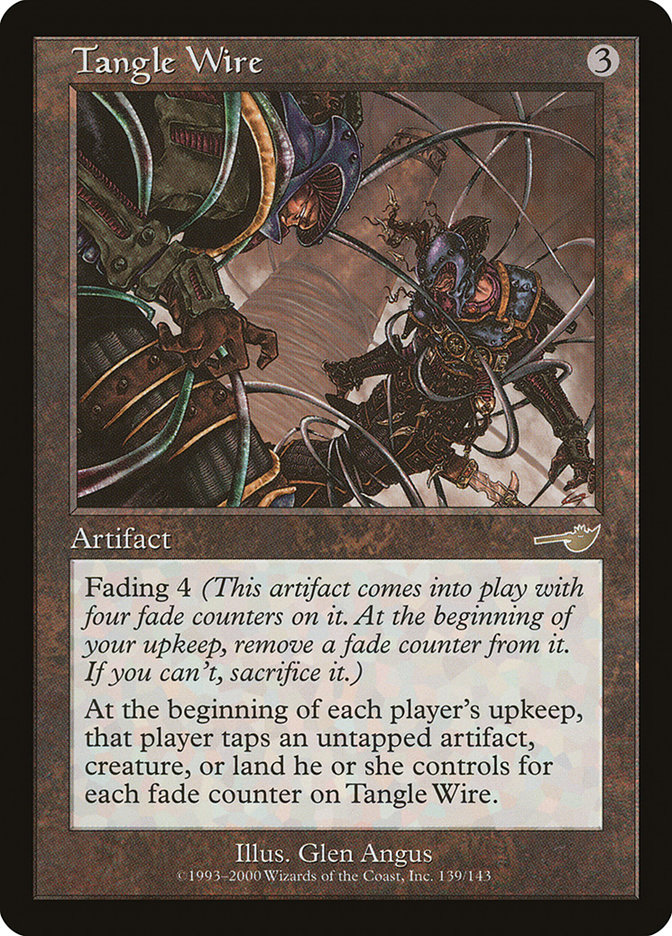
“Here’s a Snickers. Because you’re not going anywhere for a while…”
As I stated before, in a fully-powered metagame Mishra’s Workshop is a defining card. Workshop, being unrestricted and so high up in power level may actually be the defining Vintage card.
Going into a Vintage tournament with no plan for what you will do against a Mishra’s Workshop deck is basically the equivalent of playing Legacy and not having a plan against RUG Delver, Modern with no plan for beating Splinter Twin, or Standard without a way to beat a Pack Rat. Decks that cannot hang with a Mishra’s Workshop deck (particularly when on the draw) don’t tend to be Vintage decks for very long…
Fortunately, there are lots of good cards that answer an all-artifact deck.
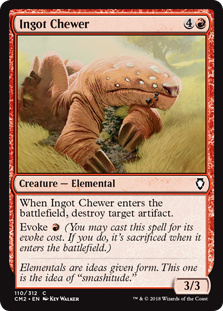
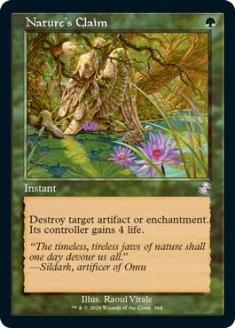
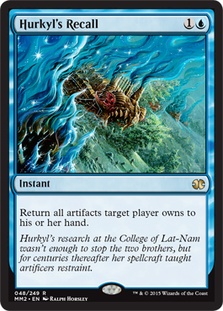
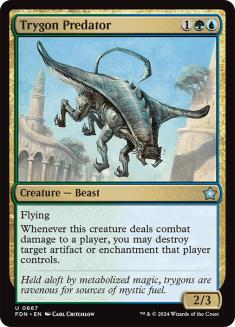
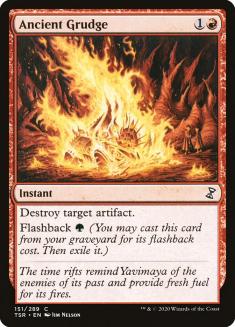
There are consequences to playing an all artifact deck in Vintage…
The linear decks like Dredge or Mishra’s Workshop tend to be extremely powerful, but they also draw a lot of hate cards from maindecks and sideboards because people know how good these decks are.
It is also worth noting that becoming familiar with how to most efficiently use your resources against a deck that is actively attacking them is extremely important. A game against Mishra’s Workshop is often like a Sudoku puzzle: if you do it right every step of the way, it is ultimately solvable, but if you start putting in wrong numbers, it inevitably becomes screwed up and unsolvable. What I mean is that games against Workshop often require extremely tight or even perfect play because one mismanaged decision will often be compounded and become insurmountable.
It takes practice, so don’t get too discouraged if it takes you a while to get the hang of it and figure out what is important!
Oath
Can you figure out how the combo works?
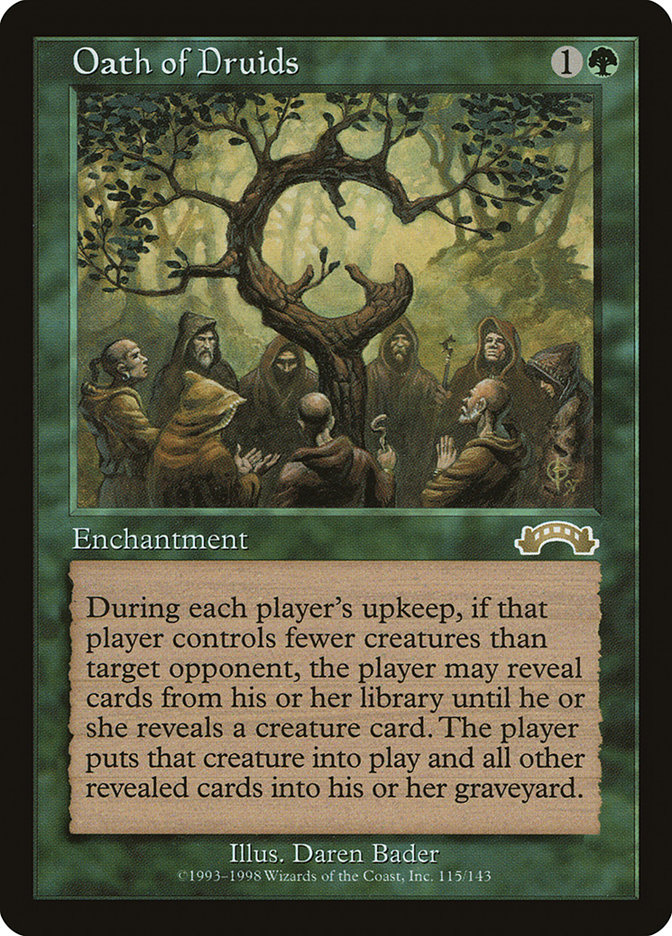
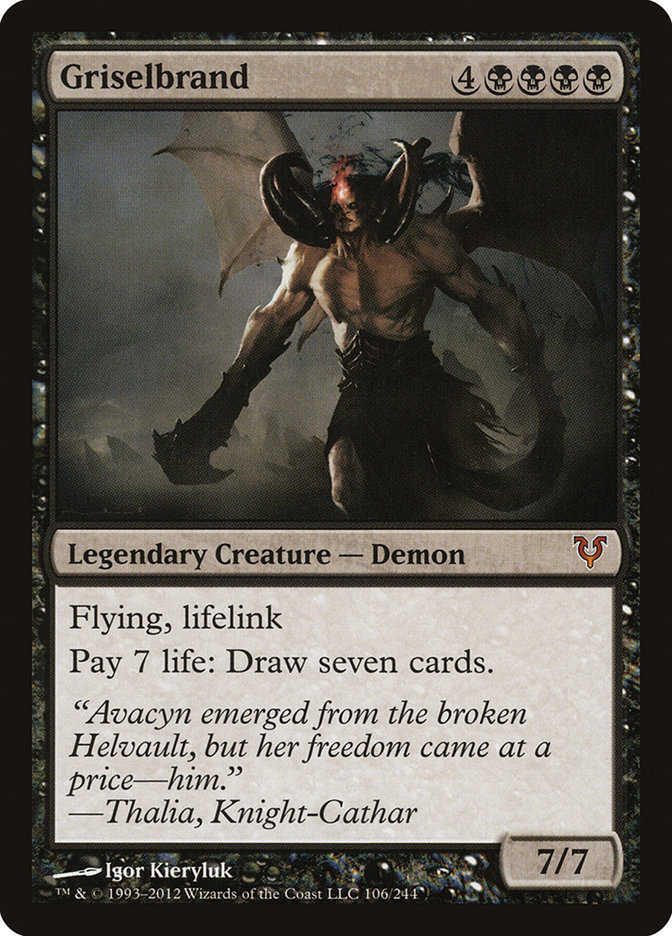
It’s pretty simple.
Pay 1G, and hopefully next turn Griselbrand shows up and the game is over.
The printing of Griselbrand has really taken the Oath of Druids archetype to a whole new level, because there is a very high probability that if Griselbrand enters the battlefield the game is just over on the spot.
Creatures (2)
Planeswalkers (2)
Lands (15)
Spells (41)
- 1 Sensei's Divining Top
- 1 Brainstorm
- 3 Mana Drain
- 1 Show and Tell
- 1 Vampiric Tutor
- 4 Oath of Druids
- 1 Yawgmoth's Will
- 4 Force of Will
- 1 Sol Ring
- 1 Demonic Tutor
- 1 Island
- 1 Time Walk
- 1 Ancestral Recall
- 1 Imperial Seal
- 1 Time Vault
- 1 Misdirection
- 1 Voltaic Key
- 1 Black Lotus
- 1 Lotus Petal
- 1 Mox Emerald
- 1 Mox Jet
- 1 Mox Pearl
- 1 Mox Ruby
- 1 Mox Sapphire
- 1 Ponder
- 1 Steel Sabotage
- 3 Mental Misstep
- 2 Flusterstorm
- 1 Memory's Journey
- 1 Abrupt Decay

Oath of Druids decks are basically the Sneak and Show deck of Vintage. The combo is simple, easy to execute, and deadly powerful when it goes off. The fact that creatures have made a comeback in Vintage and that Oath of Druids basically punishes opponents for casting creatures has also made the deck a very good performer.
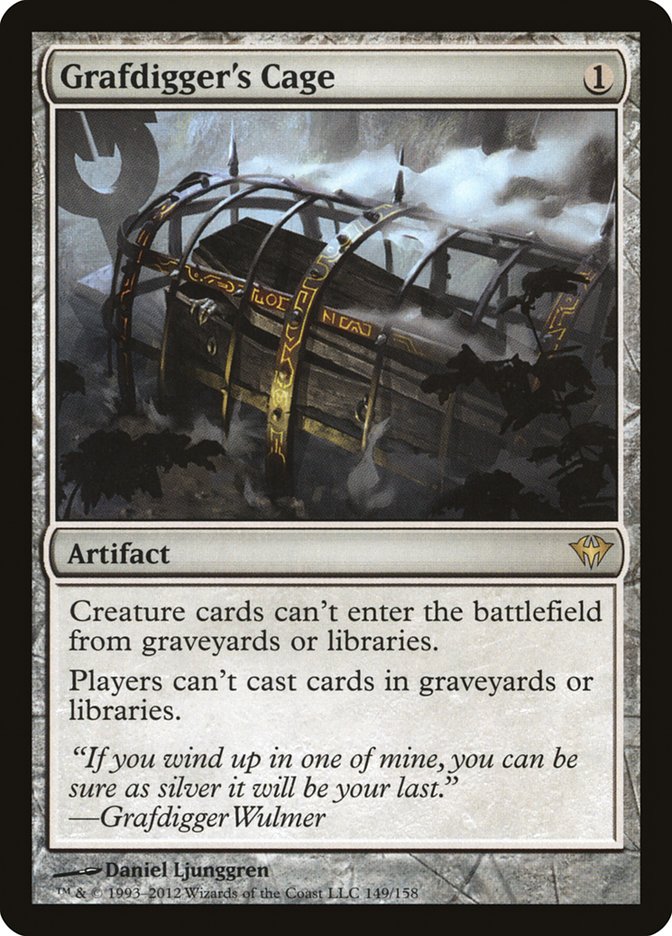
That cage is a Grafdigger way over town that digs on me…
Grafdigger’s Cage is a relatively new printing that is really holding Vintage together at the seams. The fact that it is a card that multiple decks can use to combat multiple other narrow and problematic strategies is an interesting and complex web of meta-interactions. With a Cage in play, an opposing player cannot put a creature into play with Oath of Druids (since it would enter the battlefield from the library), and since it also effectively handles Tinker, Yawgmoth’s Will, and Dredge, Grafdigger’s Cage is one of the most-played cards in Vintage.
As a man who has done some Oathing in the past year, I can tell aspiring Oathers that basically everybody is bringing it in against you, so have a plan.
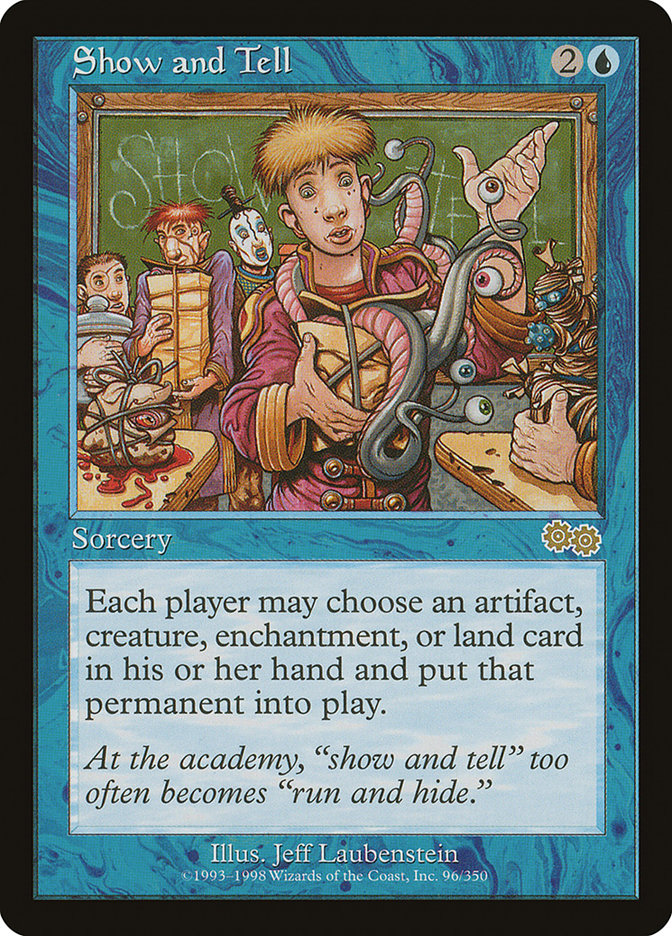
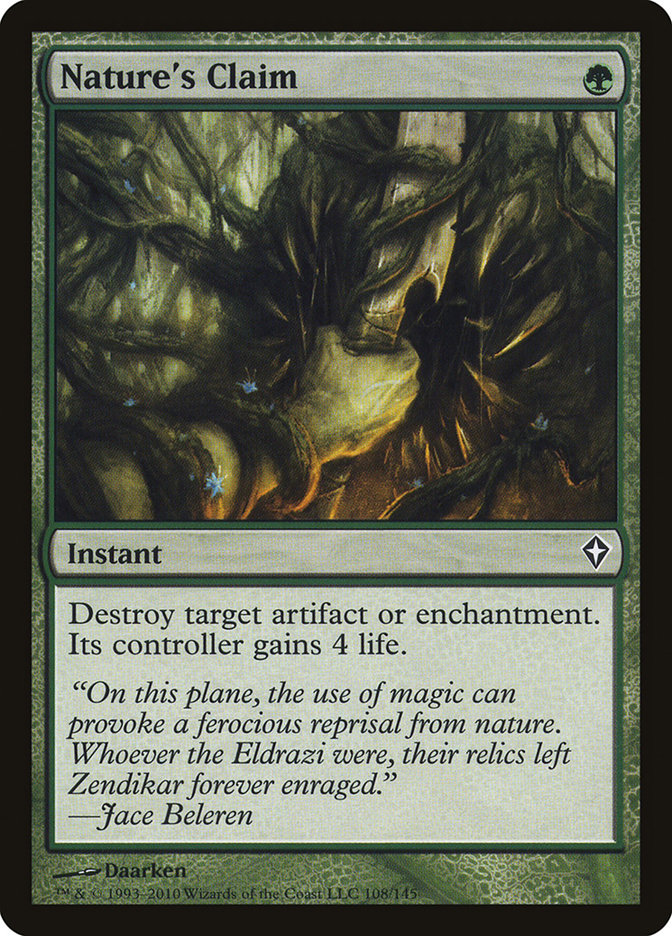
Do something else or blow it up.
Either option is fine. Both together is also fine.
Oath decks have a High Risk / High Reward element to them the way that a lot of linear combo decks do. On the one hand, putting Griselbrand into play for 1G is clearly insane, but on the other, your combo gets completely owned by a stray Nature’s Claim or Grafdigger’s Cage.
The upside is so high!
Also, keep in mind that Oath of Druids + Griselbrand is a perfectly acceptable sideboard strategy against decks that are for sure going to be on a creature plan. If you know an opponent is going to be playing creatures, you don’t even need to have Forbidden Orchards to sideboard in Oath.
Big Blue Mana Drain Control
There are basically a zillion iterations of “Big Blue” decks that have come in and out of favor over the years in Vintage. Without giving a history lesson, I’m just going to make the statement that Blue “Good Stuff” decks with various degrees of permission, disruption, and combo-style win conditions have always been at the top of the Vintage food chain.

Don’t drain on my parade.
Simply put, blue decks are outright powerful because they can play most of the best spells ever printed, they are flexible because they can splash whatever spells are most advantageous, and they are resilient to “hate” because they have that flexible element.
Vintage Control decks are also useful to think about as a spectrum:

All of these decks are going to try and control the game through card advantage, permission, and removal, inevitably winning by whichever means suits them best.
A deck like Landstill will simply trade one-for-one with all of an opponent’s cards, drawing so many extra cards themselves that the opponent can never actually get back into the game. At that point it can win however it wants, usually with Jace, the Mind Sculptor ultimate or Mishra’s Factory beats. Pure control builds will tend to play the most removal and permission.
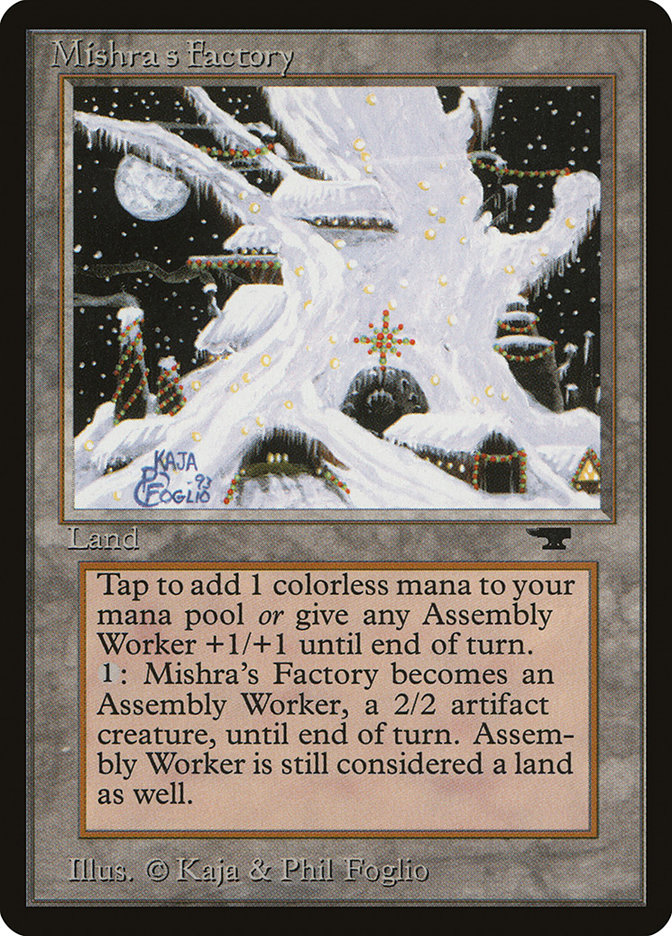

An Aggro Control deck (at least by Mana Drain deck standards) like Bomberman has threats that are also disruptive or generate card advantage. They can control the game via cards that may also be attacking in the interim.
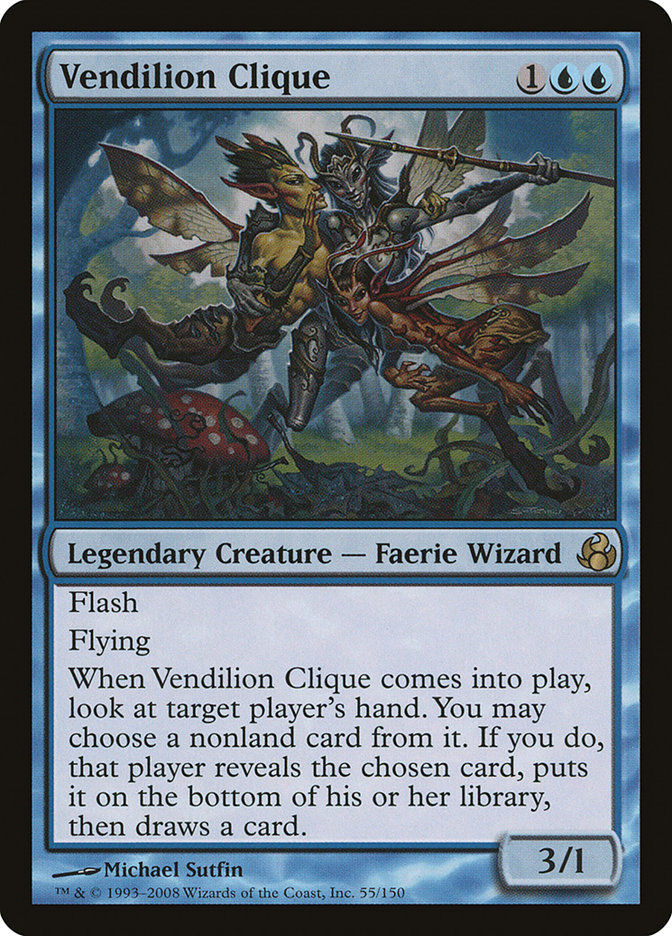
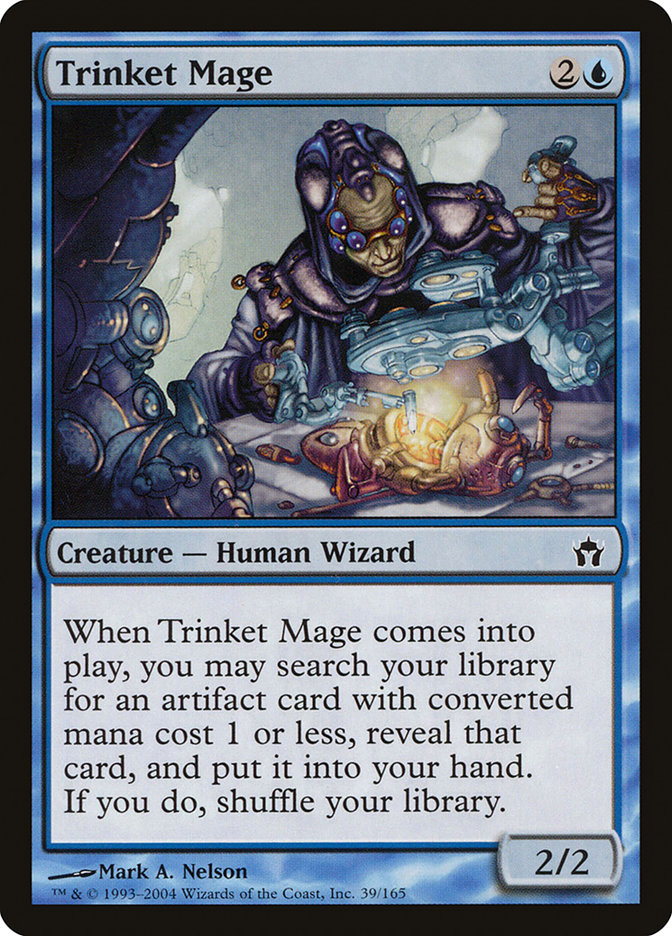
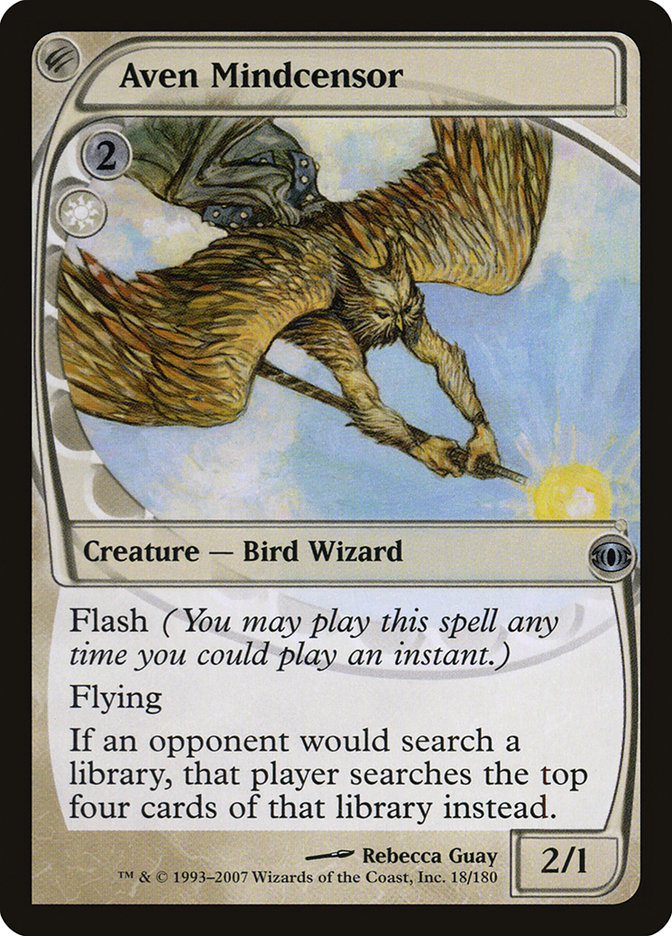
Combo Control decks control the game only as long as they need to before flipping the script and ending it with some game-winning combo. Combo control will tend to play the least reactive cards since it can simply ignore some opposing cards and win the game. For instance, if an opponent has a Tarmogoyf, a combo control deck doesn’t necessarily need to have an Abrupt Decay to kill it – a combo control deck’s answer to Tarmogoyf is legitimately “I’ll just win the game instead.”

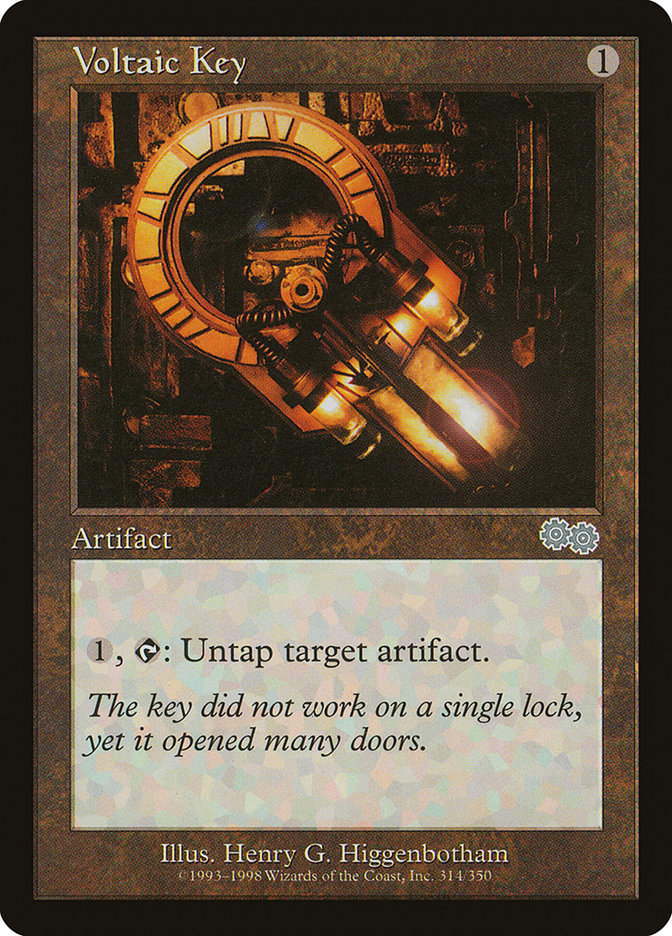


Creatures (8)
Planeswalkers (3)
Lands (12)
Spells (37)
- 2 Sensei's Divining Top
- 4 Mana Drain
- 1 Plains
- 4 Force of Will
- 4 Swords to Plowshares
- 1 Sol Ring
- 3 Island
- 1 Time Walk
- 1 Ancestral Recall
- 1 Mana Crypt
- 1 Thirst for Knowledge
- 1 Black Lotus
- 1 Mox Emerald
- 1 Mox Jet
- 1 Mox Pearl
- 1 Mox Ruby
- 1 Mox Sapphire
- 1 Engineered Explosives
- 2 Spell Snare
- 3 Mental Misstep
- 1 Flusterstorm
- 1 Grafdigger's Cage
Sideboard

An example of a Mana Drain deck that controls the game while attacking with creatures. Bomberman is very good at playing the card advantage game as it has a lot of two-for-ones as the game goes long.
Planeswalkers (4)
Lands (14)
Spells (42)
- 1 Brainstorm
- 3 Mana Drain
- 1 Vampiric Tutor
- 1 Mystical Tutor
- 1 Yawgmoth's Will
- 4 Force of Will
- 1 Mana Vault
- 1 Sol Ring
- 1 Regrowth
- 1 Demonic Tutor
- 1 Hurkyl's Recall
- 1 Island
- 1 Time Walk
- 1 Ancestral Recall
- 1 Mana Crypt
- 1 Time Vault
- 1 Gifts Ungiven
- 1 Thirst for Knowledge
- 1 Misdirection
- 1 Tinker
- 1 Voltaic Key
- 1 Black Lotus
- 1 Pernicious Deed
- 1 Fact or Fiction
- 1 Mox Emerald
- 1 Mox Jet
- 1 Mox Pearl
- 1 Mox Ruby
- 1 Mox Sapphire
- 2 Spell Snare
- 1 Blightsteel Colossus
- 2 Mental Misstep
- 1 Flusterstorm
- 1 Abrupt Decay
- 1 Toxic Deluge

Creatures (7)
Planeswalkers (2)
Lands (13)
Spells (38)
- 1 Sensei's Divining Top
- 1 Brainstorm
- 2 Mana Drain
- 1 Plains
- 1 Vampiric Tutor
- 1 Mystical Tutor
- 1 Yawgmoth's Will
- 4 Force of Will
- 3 Swords to Plowshares
- 1 Sol Ring
- 1 Demonic Tutor
- 2 Island
- 1 Time Walk
- 1 Ancestral Recall
- 1 Disenchant
- 1 Mana Crypt
- 1 Time Vault
- 1 Tinker
- 1 Voltaic Key
- 1 Black Lotus
- 1 Mox Emerald
- 1 Mox Jet
- 1 Mox Pearl
- 1 Mox Ruby
- 1 Mox Sapphire
- 1 Spell Pierce
- 1 Steel Sabotage
- 1 Blightsteel Colossus
- 2 Mental Misstep
- 1 Flusterstorm
Sideboard

These two control decks fall somewhere in between Aggro Control and Combo Control. Both decks have the Plan A of comboing off either with Time Vault or Blightsteel Colossus, but they also have backup plans that include attacking with card advantage creatures like Dark Confidant, Snapcaster Mage, and Trygon Predator.
Planeswalkers (4)
Lands (10)
Spells (46)
- 3 Sensei's Divining Top
- 1 Brainstorm
- 1 Vampiric Tutor
- 3 Grim Monolith
- 1 Yawgmoth's Will
- 4 Force of Will
- 1 Mana Vault
- 1 Sol Ring
- 1 Demonic Tutor
- 5 Island
- 1 Time Walk
- 1 Ancestral Recall
- 1 Mana Crypt
- 1 Timetwister
- 1 Time Vault
- 1 Thirst for Knowledge
- 2 Misdirection
- 1 Tinker
- 1 Rebuild
- 4 Voltaic Key
- 1 Black Lotus
- 1 Mox Emerald
- 1 Mox Jet
- 1 Mox Pearl
- 1 Mox Ruby
- 1 Mox Sapphire
- 4 Thoughtseize
- 1 Blightsteel Colossus

A deck like this is pretty clearly on the combo control side of the spectrum. It does two things:
1) Not die.
2) Combo off.
The Turbo Tezz archetype is defined by playing lots of fast artifact mana – more than a typical blue deck would – often stretching into Grim Monolith and Mox Opal for additional acceleration. These decks use that mana to very aggressively try to set up their combo conditions.
A deck like this is technically more of a combo deck than a control deck.
Storm
Vintage is all about turn one kills and not being interactive…
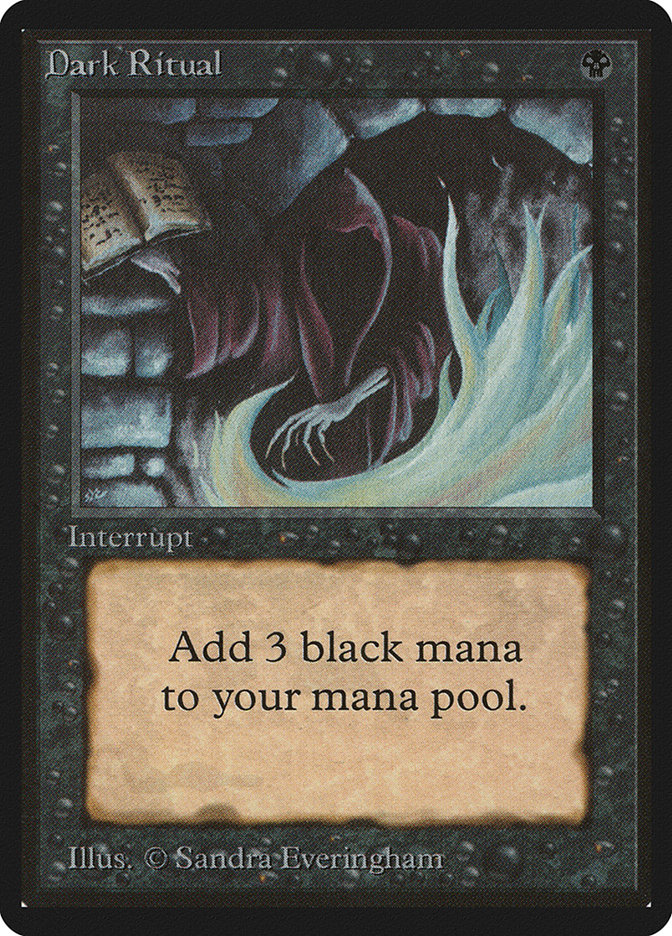
A.K.A. why Vintage has a bad reputation.
One thousand times not true… Except in the case of Storm decks, in which case it can be quite true.
Vintage Storm decks are very fast and very powerful. They typically goldfish around turn 1.5 if you push it. To be fair, the Legacy Storm decks are basically just as fast with four copies of Lion’s Eye Diamond. The big difference is that Legacy Storm decks are not nearly so resilient as Vintage Storm decks are. In Legacy, a Storm deck probably isn’t winning on turn three through three counterspells, but in Vintage cards like Yawgmoth’s Will and Necropotence make nearly anything possible.
Lands (12)
Spells (48)
- 2 Tendrils of Agony
- 3 Cabal Ritual
- 1 Vampiric Tutor
- 1 Mystical Tutor
- 1 Yawgmoth's Will
- 4 Duress
- 1 Necropotence
- 1 Mana Vault
- 1 Sol Ring
- 1 Demonic Tutor
- 1 Island
- 1 Time Walk
- 4 Dark Ritual
- 1 Ancestral Recall
- 1 Mana Crypt
- 1 Time Vault
- 1 Voltaic Key
- 1 Black Lotus
- 1 Lotus Petal
- 1 Mox Emerald
- 1 Mox Jet
- 1 Mox Sapphire
- 4 Chrome Mox
- 4 Pact of Negation
- 3 Ad Nauseam
- 3 Preordain
- 2 Gitaxian Probe
- 1 Flusterstorm
Sideboard

So, if a deck like this can battle through counterspells, win on the first turn, etc. etc. why doesn’t everybody just play Dark Rituals?
The answer is pretty simple:

“The Sheriff is in town.”
Fast combo decks have an absolutely miserable time trying to play through all of the disruption that Mishra’s Workshop decks can put onto the board. Unfortunately for players who “Wanna Go Fast,” Mishra’s Workshop gets to be on the play half of the time – which means that half of the time all of the fun will be spoiled by Chalice of the Void, Sphere of Resistance, and Thorn of Amethyst.
However, if you can duck the matchup and win some die rolls or take a Dark Ritual deck into the right field, it can be an absolute powerhouse deck to play.
Vintage is a format where players really have a lot of options with regard to what style of deck they want to play, and even within the different archetypes of decks there is a ton of room for customization, personalization, and modification.
I’m really looking forward to seeing the Vintage online metagame start to get rolling and for players from all of the distinct metagames around the world get the opportunity to compete against one another! It is truly going to be a time of great innovation for Vintage moving forward, and I am certainly looking forward to watching it all unfold.
